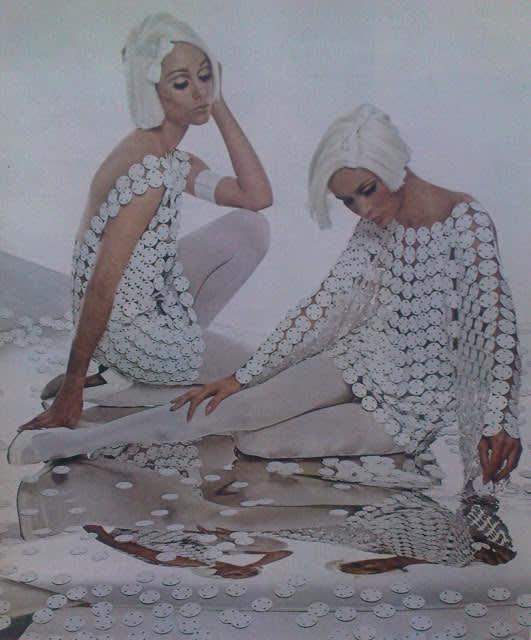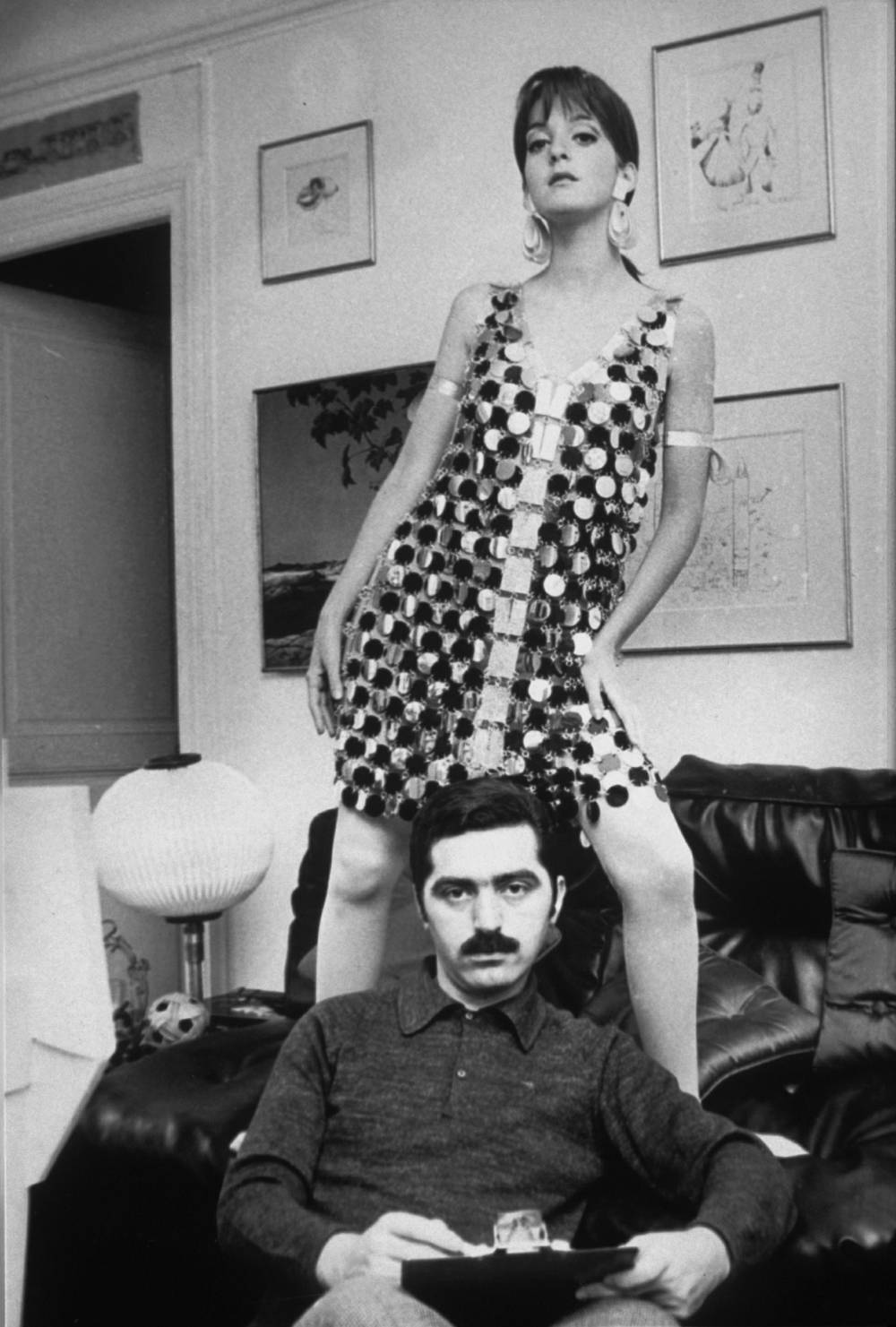
Portrait
Paco Rabanne with a model in one of his link dresses, 1966
Before the fashion world evolved into the powerful global industry that we know – and mostly love – today, young creatives dreaming of a ‘career in fashion’ were few and far between. In fact, many of 20th century fashion’s most celebrated names turned to clothing design after failed attempts at other careers.
Christian Dior, for example, left school in 1928 to fulfill his dreams of opening an art gallery. After receiving money from his father, Dior operated a small gallery in Paris for three years, dealing in the works of notable artists such as Pablo Picasso and Georges Braque. Only after being forced to shut its doors due to financial trouble as a result of the Great Depression did Dior turn to fashion as a way to make ends meet. It is safe to say that without this budgetary hiccup, the world would not only have never seen Dior’s game-changing 1947 ‘New Look’ – which singlehandedly changed the history of 20th century fashion – but the multi-billion-dollar house of Dior would not be in existence either.
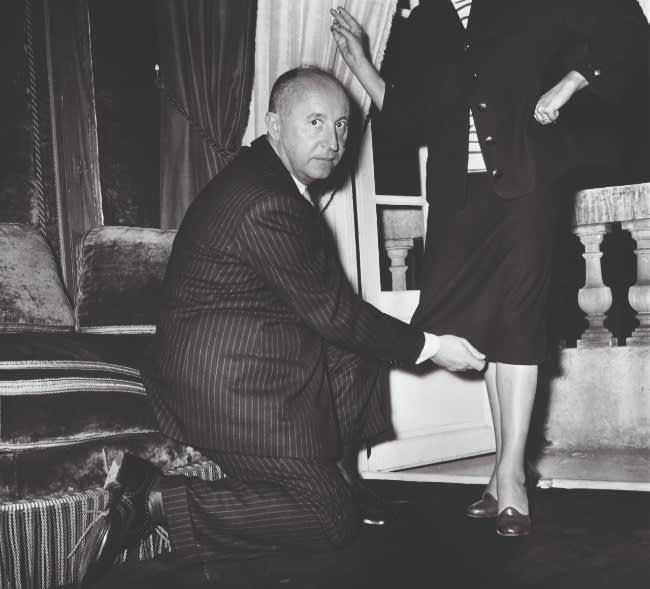
Christian Dior
In a fitting 1950s
As it turns out, in the mid-1950s Christian Dior employed a young architecture student from Spain named Paco Rabanne, whose career in fashion ended up following a similar trajectory. While studying at l’École Nationale des Beaux-Arts in Paris, Rabanne utilized his skills as a draftsman to make fashion sketches for Dior and Hubert de Givenchy as a way of earning extra money. Despite his early taste of the industry, after graduating from school Rabanne took a job with August Peret, France’s foremost developer of reinforced concrete, where he worked for over ten years.
Paco Rabanne
1960s
Paco Rabanne
1960s
Paco Rabanne
1960s
Fast forward to the mid-1960s when the then-thirty-year-old returned to fashion, creating plastic jewelry and buttons for Parisian couture houses. After once again whetting his appetite for the industry, Paco Rabanne founded his namesake label in 1966, presenting a debut collection appropriately titled, “Manifesto: 12 Unwearable Dresses in Contemporary Materials.” Pulling from his background in industrial design, Rabanne’s use of unconventional materials such as metal, paper, and plastic in his slinky garments and trademark accessories soon became his signature.
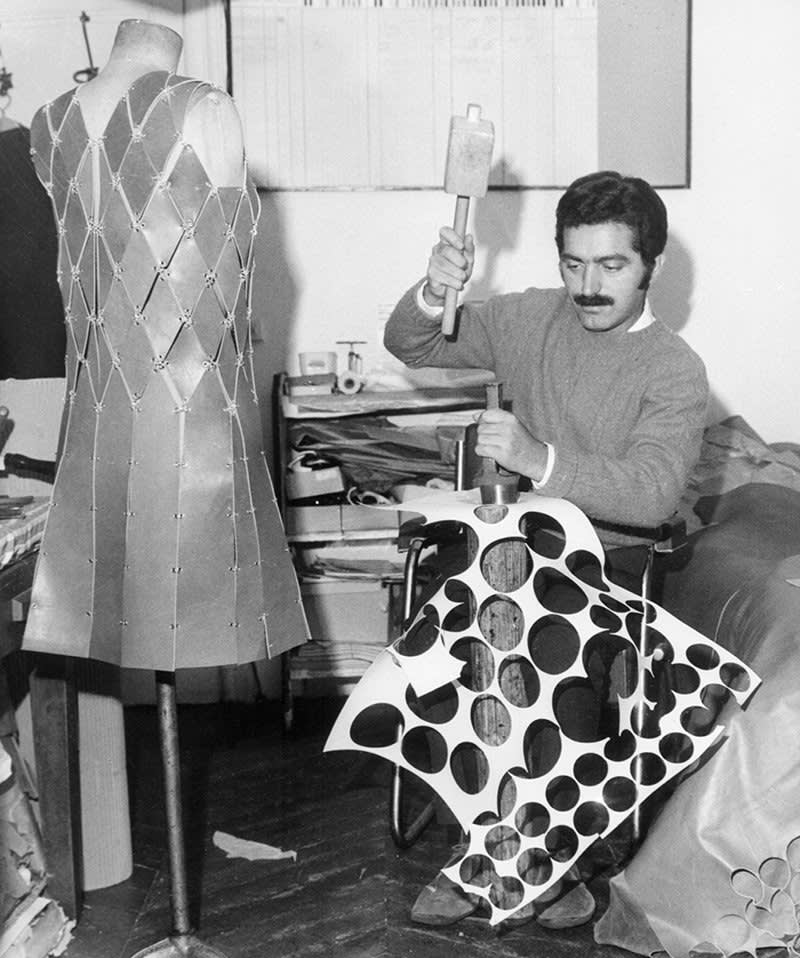
Paco Rabanne
Manifesto: 12 unwearable dresses in contemporary materials, 1966
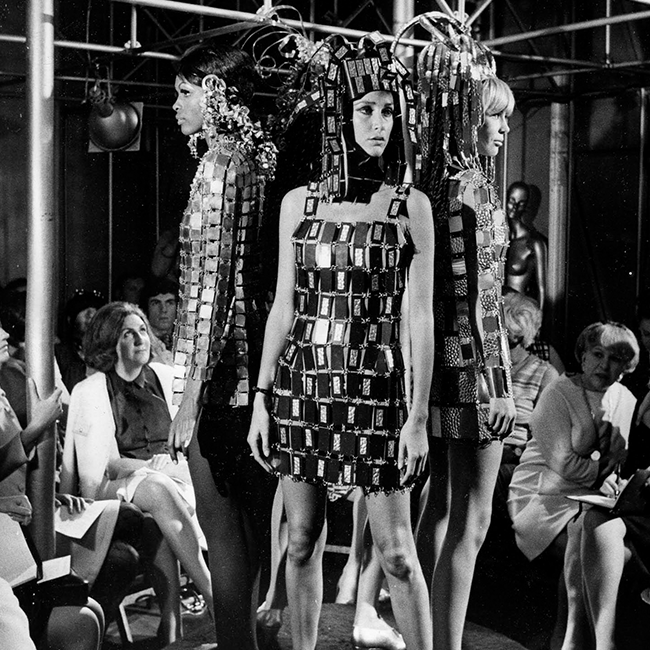
Paco Rabanne
Manifesto: 12 unwearable dresses in contemporary materials, 1966
Throughout the 1960s fashion’s newly minted enfant terrible transformed the space-age aesthetic while challenging industry norms through the design, fabrication, and construction of his trademark dresses. Appearing from a distance like a mirage of liquid silver, at closer inspection one finds that Rabanne’s disc-shaped, tiled garments are composed of identical metal plates held together by tiny rings, much like chainmail. In many ways these link garments speak as self-portraits, paying homage to the designer’s history as an architect, in their construction, and his early career as a button-maker, through their round disks.

Paco Rabbane
Metal Disk Dress, 1966
While the designer’s influence and brand grew significantly throughout the latter half of the 20th century – from launching a fragrance business in 1968 to collaborating on costumes for a number of prominent films in the 1960s and 70s – Rabanne’s early ‘Rhodoid Plastic Disk Dress’ still remains a hallmark of the house even after its years of expansion. In fact the design has become so iconic that in 1996 the brand even launched a ‘do it yourself’ version of the dress. Housed in a “suitcase” kit containing 2 pliers, 1 Paco Rabanne metal label, 750 sequins, 1300 tiny metal rings, and an instruction manual, the significance of the DIY dress is two-fold: it pays homage to the brand’s iconic 1966 design, and honors founder Paco Rabanne’s early days making each of his complex garments by hand.
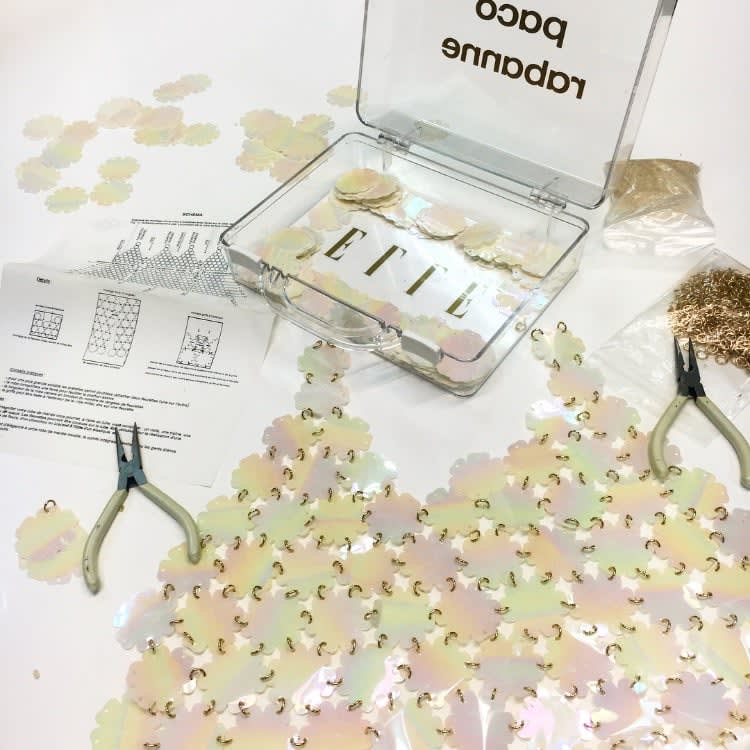
Paco Rabanne
DIY Disk Dress
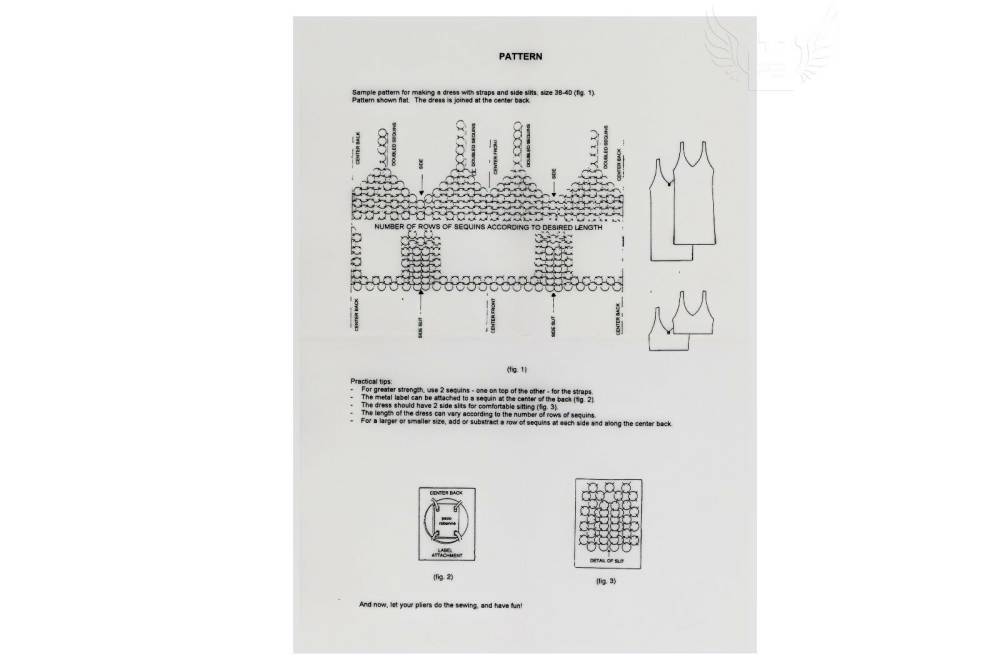
Paco Rabanne
DIY Disk Dress, Dress Instructions
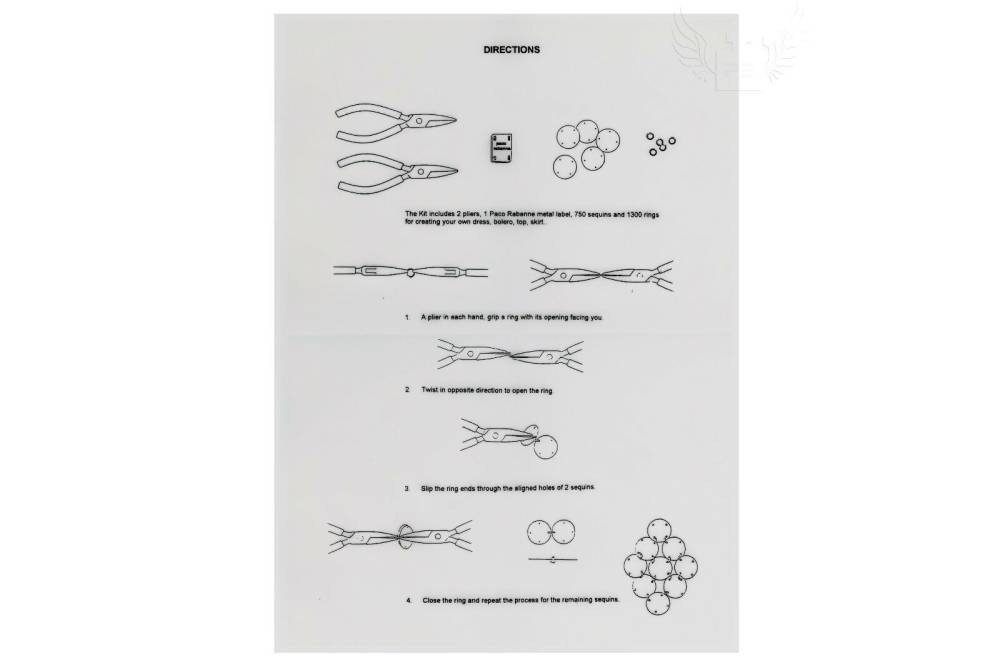
Paco Rabanne
DIY Disk Dress, Dress Instructions
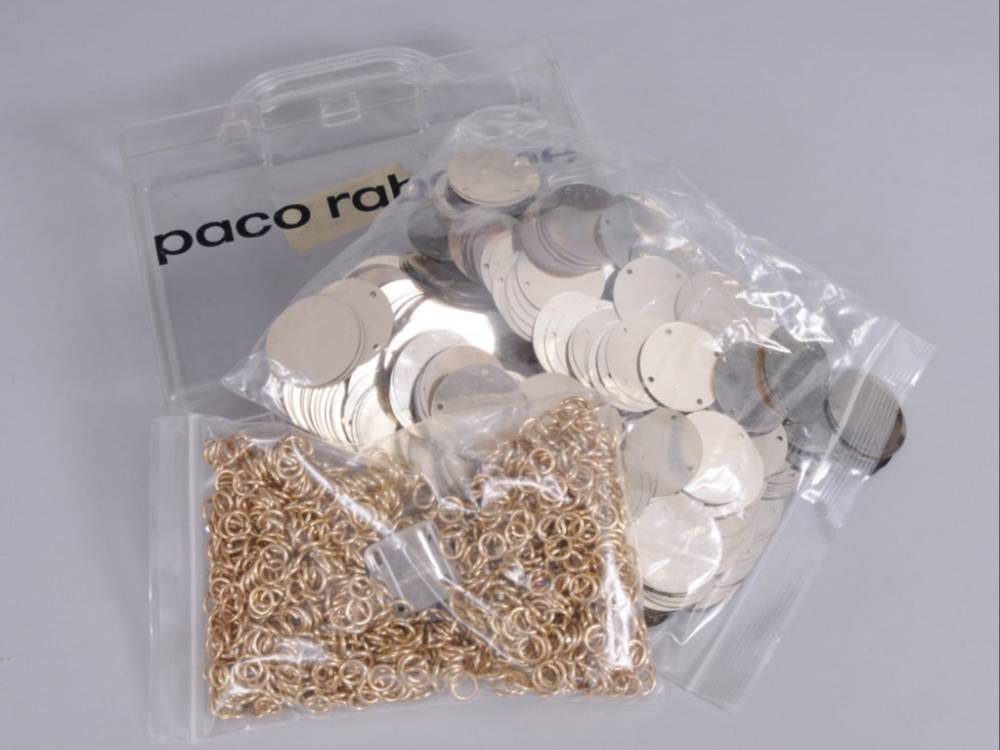
Paco Rabanne
DIY Dress Kit, 1996
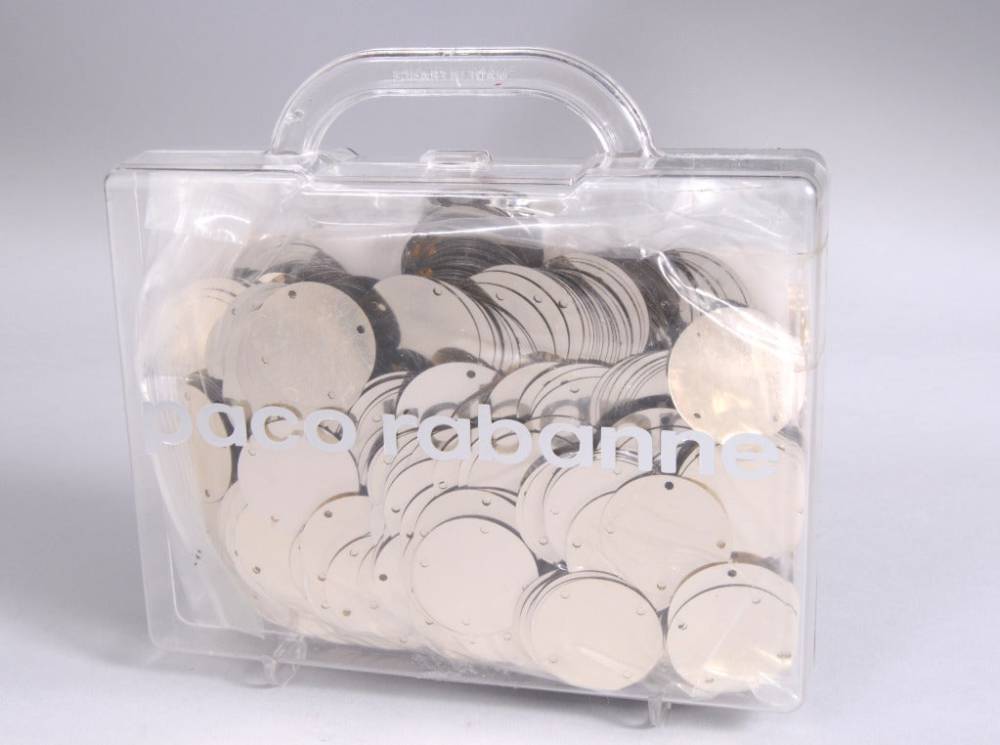
Paco Rabanne
DIY Dress Kit, 1996
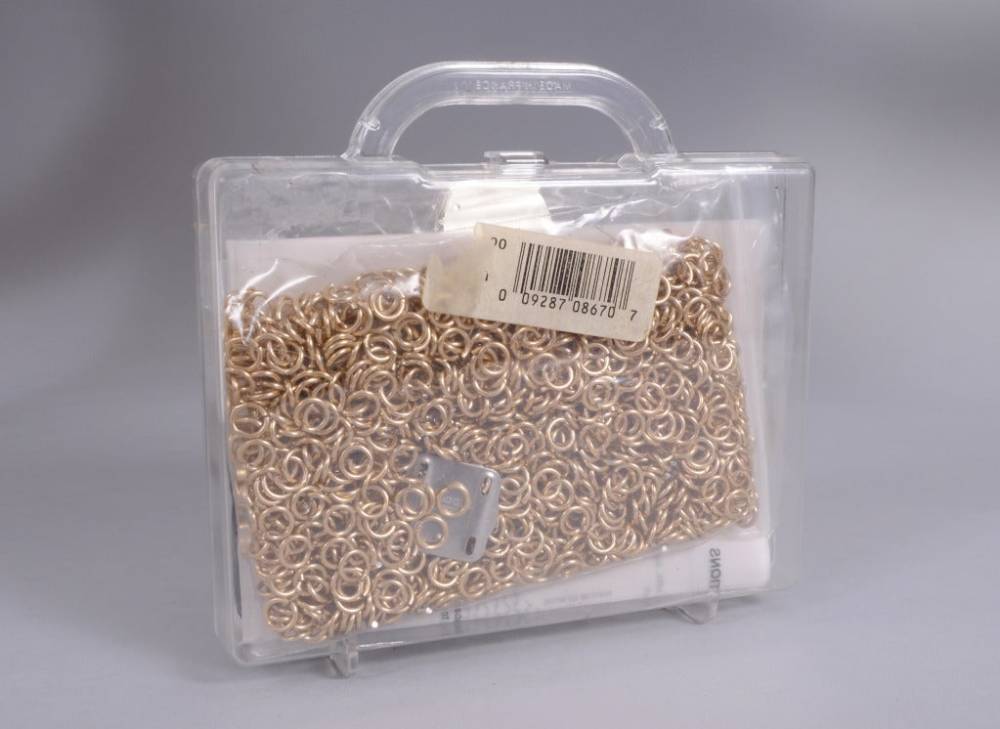
Paco Rabanne
DIY Dress Kit, 1996
While the commercial success of these kits is largely unknown – one would assume that Paco Rabanne fans today might not have time enough to construct their own party dress from scratch – the kit is a remarkable example of high fashion ephemera and can still be found on resale sites today.
